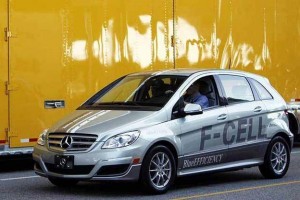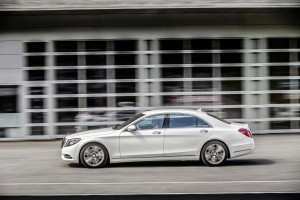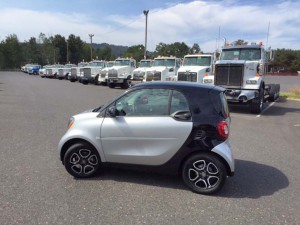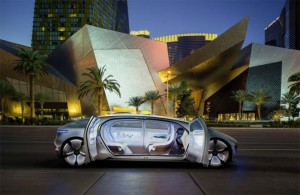Mercedes-Benz parent Daimler AG will invest more than seven billion euros, or $8 billion, on green powertrains over the next two years – about half of its total R&D budget — the automaker said today.
That effort will include a mix of different technologies, including fuel-cell vehicles and clean diesels, as well as various battery drive systems. The maker said that “all” of its vehicle lines will be “electrified” by 2020, with sales of such models expected to be in the “six figures” by then, according to Daimler R&D chief Thomas Weber.
“We will electrify all Mercedes-Benz passenger car model series step by step,” said Weber,the executive last week announcing that a prototype of a new models capable of 500 kilometers, or about 310 miles per charge, will be revealed at the Paris Motor Show in October.
A key element of Daimler’s green push is to come up with green technologies that can seamlessly replace conventional drivetrains. “Customers are not looking to sacrifice in the sense of ‘less car,’” Weber said.
Weber noted that the fuel economy of the typical Mercedes-Benz model has nearly doubled since 1995 – going from just over 25 mpg to 47 mpg (a figure that includes gas and diesel models – and which uses the more lenient European standard. EPA ratings are typically lower by a third or more.)
(Mercedes maintains top spot in luxury car battle. Click Here for more.)
The new powertrain technologies will include a family of “clean” BlueTec diesels that is making its debut this spring with the launch of the all-new Mercedes-Benz E220d model. There will be a number of variants to follow that will be used in both longitudinal and transverse layouts in vehicles with both front- and rear-wheel-drive, as well as all-wheel-drive, Mercedes said.
Daimler’s commitment to diesel comes despite ongoing concerns about the high-mileage technology. Some industry observers have questioned whether diesels would begin losing momentum in the wake of the VW diesel emissions test scam. Daimler, in fact, is facing two class-action lawsuits in the U.S. claiming it also cheated on tests – an allegation the maker denies.
Hydrogen power is also part of the broad Daimler strategy. The planned Mercedes GLC F-Cell is set to become the world’s first fuel-cell system paired with a plug-in hybrid. That approach is expected to boost both performance and fuel economy.
When it comes to battery power, the Mercedes brand intends to make Stop-Start technology a standard feature on its passenger vehicles. It will also roll out new 48-volt onboard power supplies to enhance the function of mild hybrid technology. More advanced hybrids and plug-ins will be available in larger numbers, as well.
By the end of 2016, Mercedes will have eight plug-in models in showrooms, with the arrival of the GLC Coupe 350 e 4Matic and the E350e. Next year, an updated version of the S500e will adopt a more advanced lithium-ion battery pack capable of delivering 50 km, or more than 31 miles, of pure electric driving range per charge.
(Click Here for more on the new Mercedes-Benz E-Class.)
As for pure battery-electric vehicles, or BEVs, the German carmaker is looking to offer that alternative on several models and said it is developing a dedicated vehicle architecture for future use. That would give it the opportunity to optimize battery placement, among other things, much like Tesla has done by placing its lithium-ion batteries in the load floor of vehicles like the Models S and X.
A prototype of a new, long-range electric model will be previewed at the Paris Motor Show, Weber telling journalists last week, “The structure is ready, the teams are working and the initial results from road tests are coming in quick succession.”
(Tesla launches lower-cost entry version of the Model S. Click Here to check it out.)
Daimler’s Smart brand also will benefit from the green R&D program, the maker’s fourth-generation ForTwo Electric Drive model now in final development.
The push for green energy extends to Daimler’s truck operations. It will, among other things, offer both battery and hydrogen-powered versions of its Citaro bus.
Separately, Daimler is now pushing into stationary battery storage following the 2015 creation of Embase, a joint venture pairing it with The Mobility House AG and GETEC. The project will repurpose used batteries from Smart electric drive vehicles , packaging them into stationary storage to help level out the German primary energy grid.




